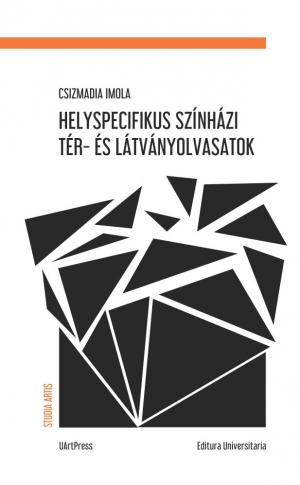Helyspecifikus színházi tér- és látványolvasatok
Synopsis
Site-specific Theatrical Space and Visual Readings
The defining discourse of the present research reflects on the theatrical phenomenon, which means the release of the performance from the box stage into the real, “free”, that is environmental (physical or “found”) (life)-space. This “shift” of representation from traditional (perspective stage) space to a concrete, artistically neutral context - has clear consequences regarding both space use and spectacle, and last but not least, reception.
Thus, we are looking at a phenomenon that shows specific problems of local or environmental-specific performances, such as the principle of transparency, the framework, the gesture of persuasion, the intrusion of the real, the problem with the spectator, etc. The book examines the range of these phenomena through three local space-specific lectures.
The first part reflects up to a chapter on issues such as the spatial experience of contemporary site- or environment-specific lectures. The spatial-forming principle and practice of representation, the (contemporary) spatial form, such as the peculiarity and mode of operation of the environmental space. The topic covered in the first part also leads to problems that are strongly emphasized related to the limit of representation. The discussion of the framework is summed up in the assumption that it is the (additional) element of representation that determines the further direction of the investigation. The dissertation confirms however that it is the framework that results in shifts that change the essence of the performance/work. In fact when the framework is missing, then both the artificial unity and the structure become uncertain.
At the forefront of the second part of the dissertation and the assessment of descriptive analysis, the phenomena are related to the visuality of site-specific representations. Visual reading of environmental performances, such as street theatre or various performance-type performances, needs to be interpreted, since the specificity of that “visual sphere” or material requires the recipient, in contrast to the traditional way of communicating, to make a paradoxical reading that assumes the spectator orders the view to the performance without being marked or marked in an “aesthetic framework”. This concluding part of the research is therefore entirely subordinated to the imaging analysis of environmental performances and the understanding of the logic and dramaturgy of image or visual creation.


